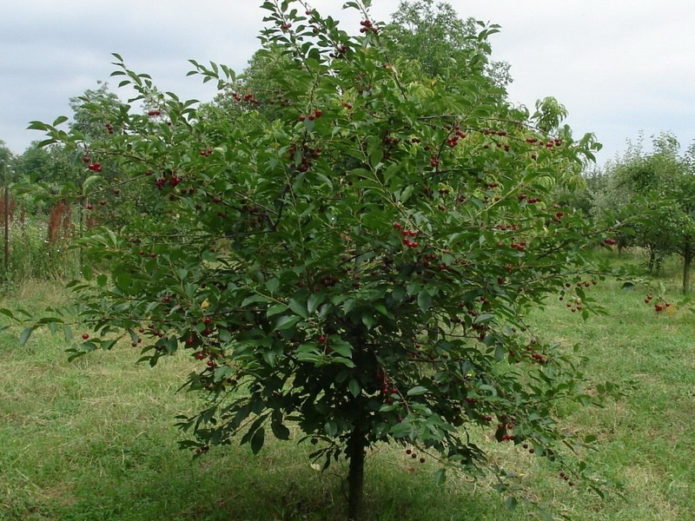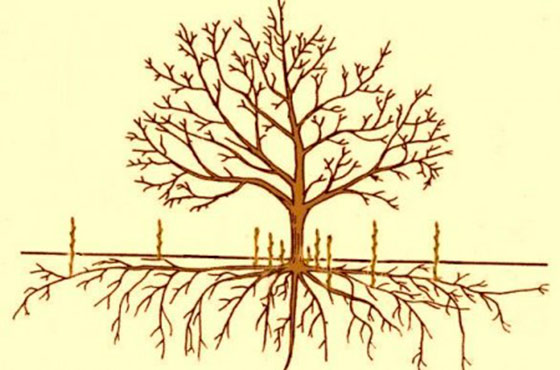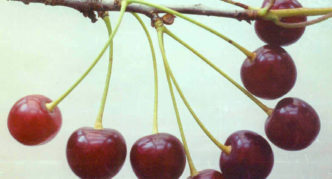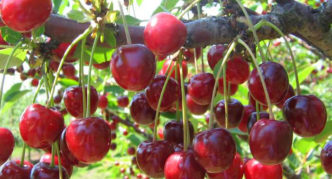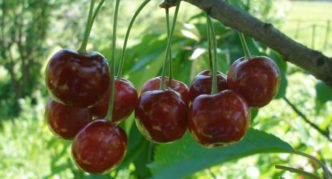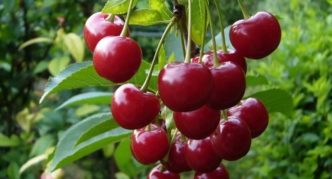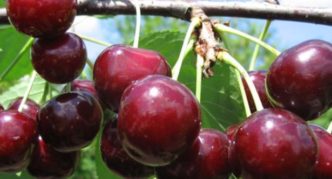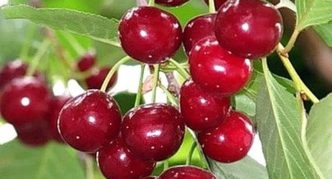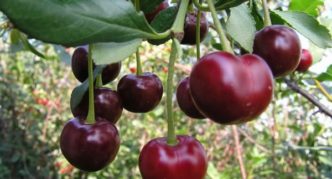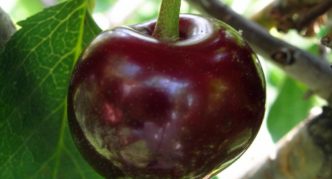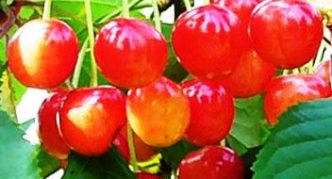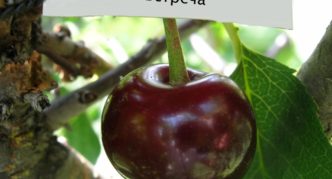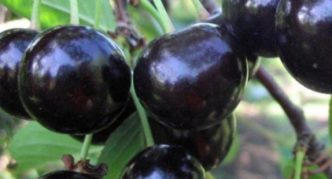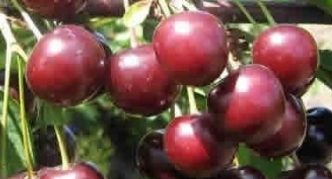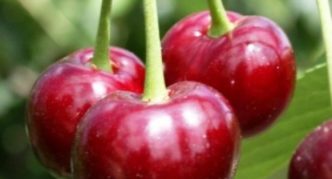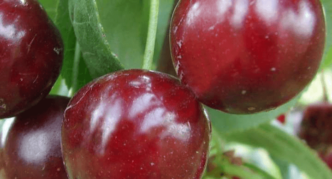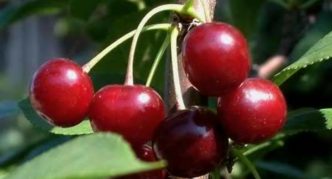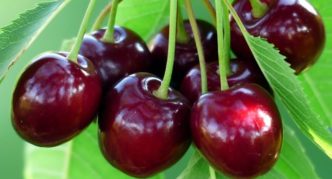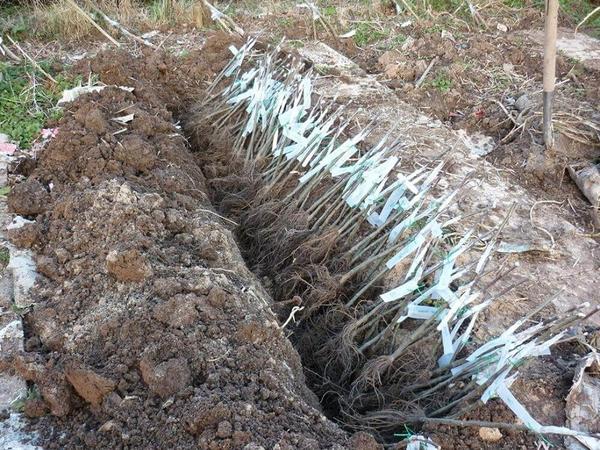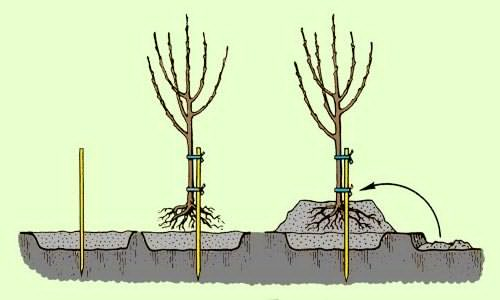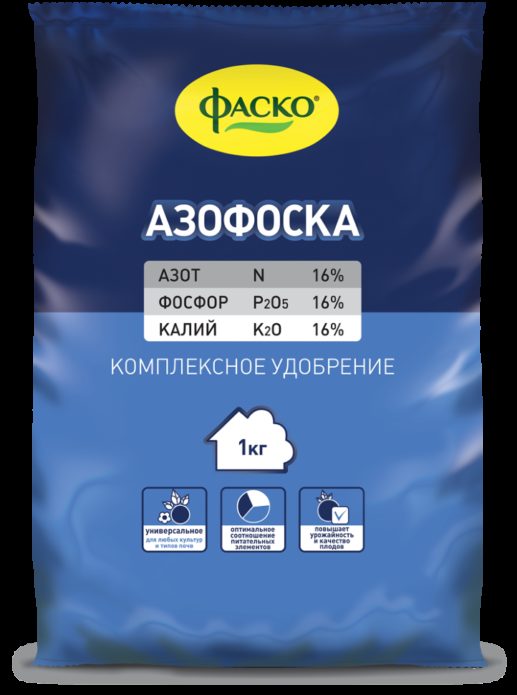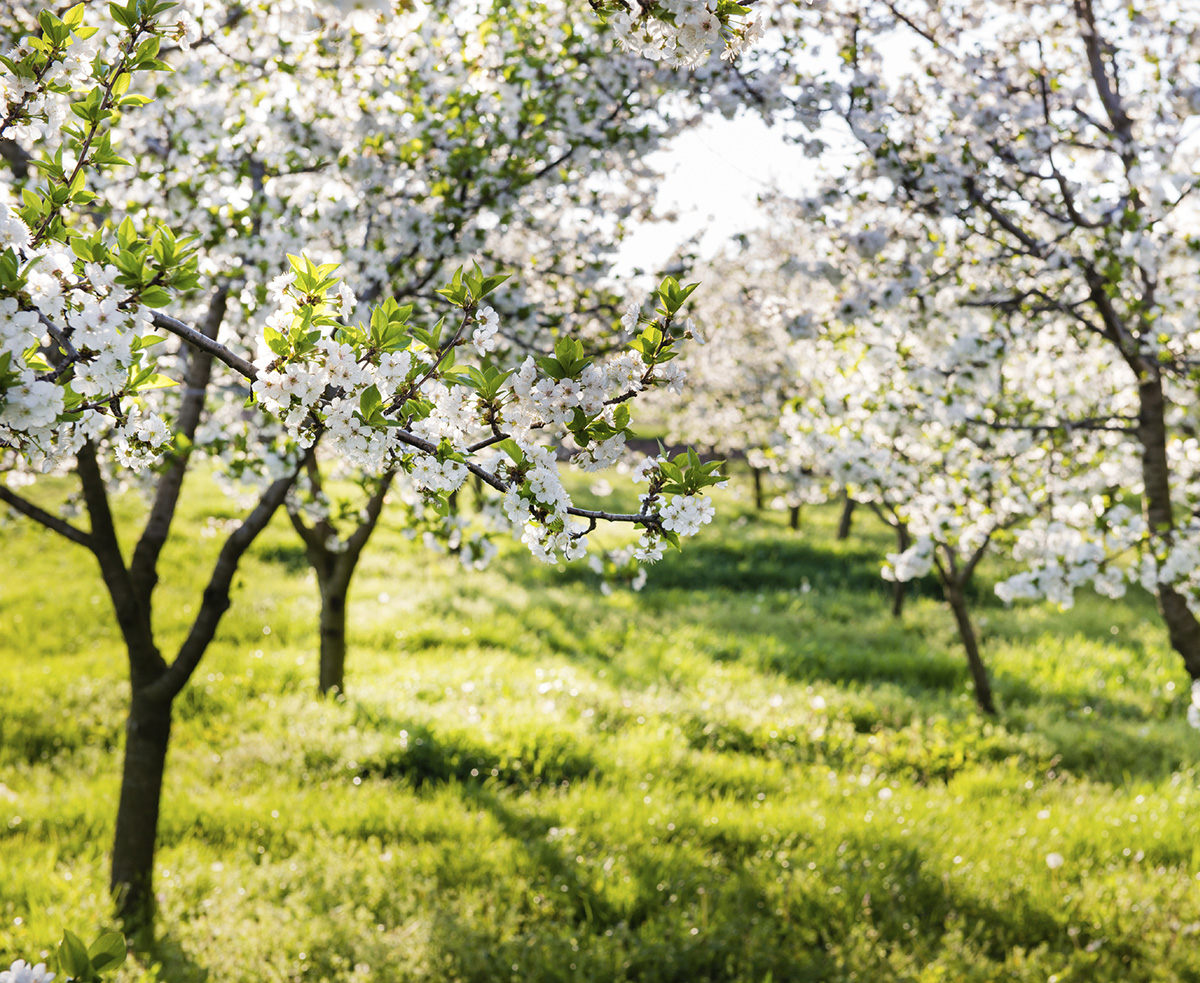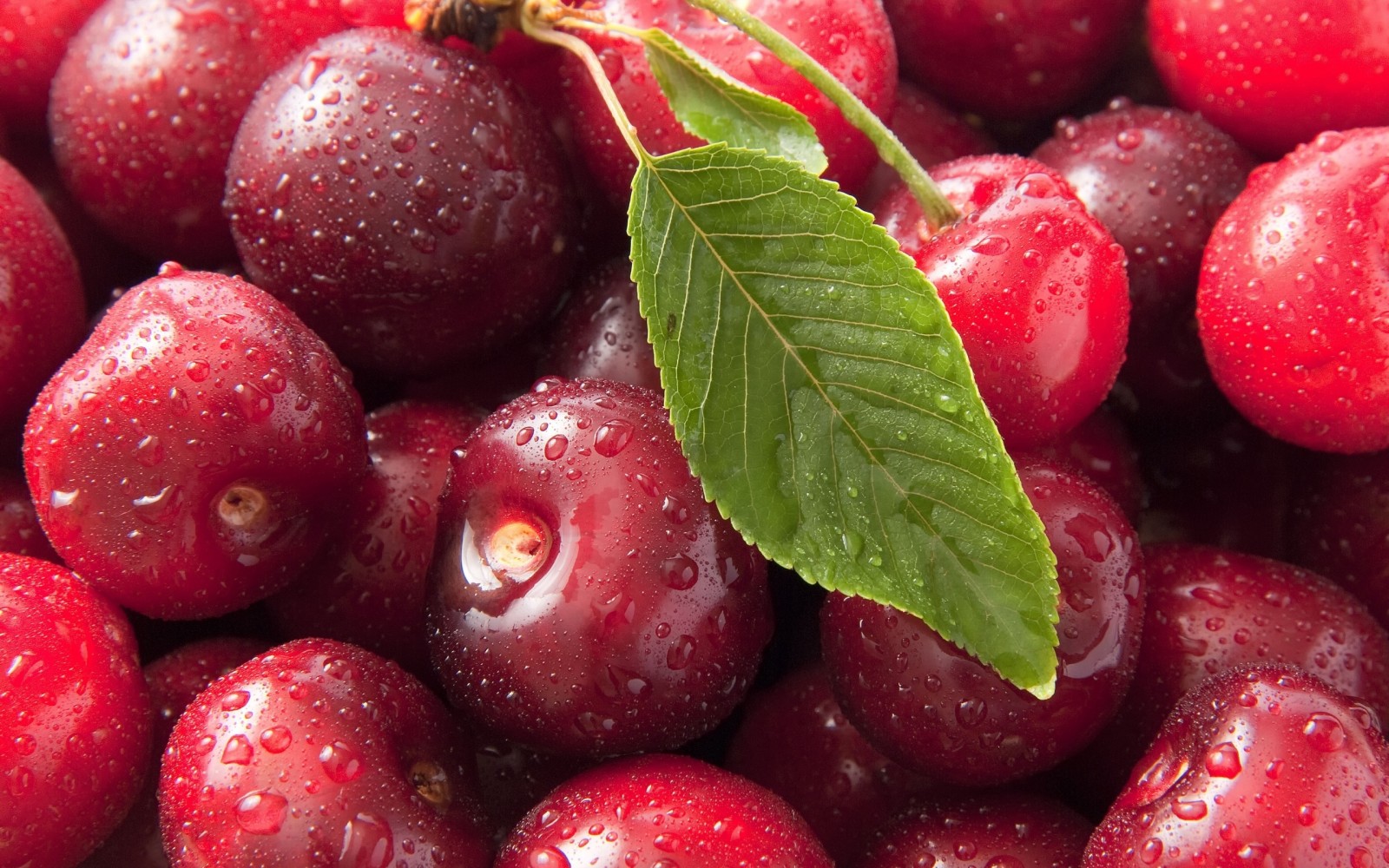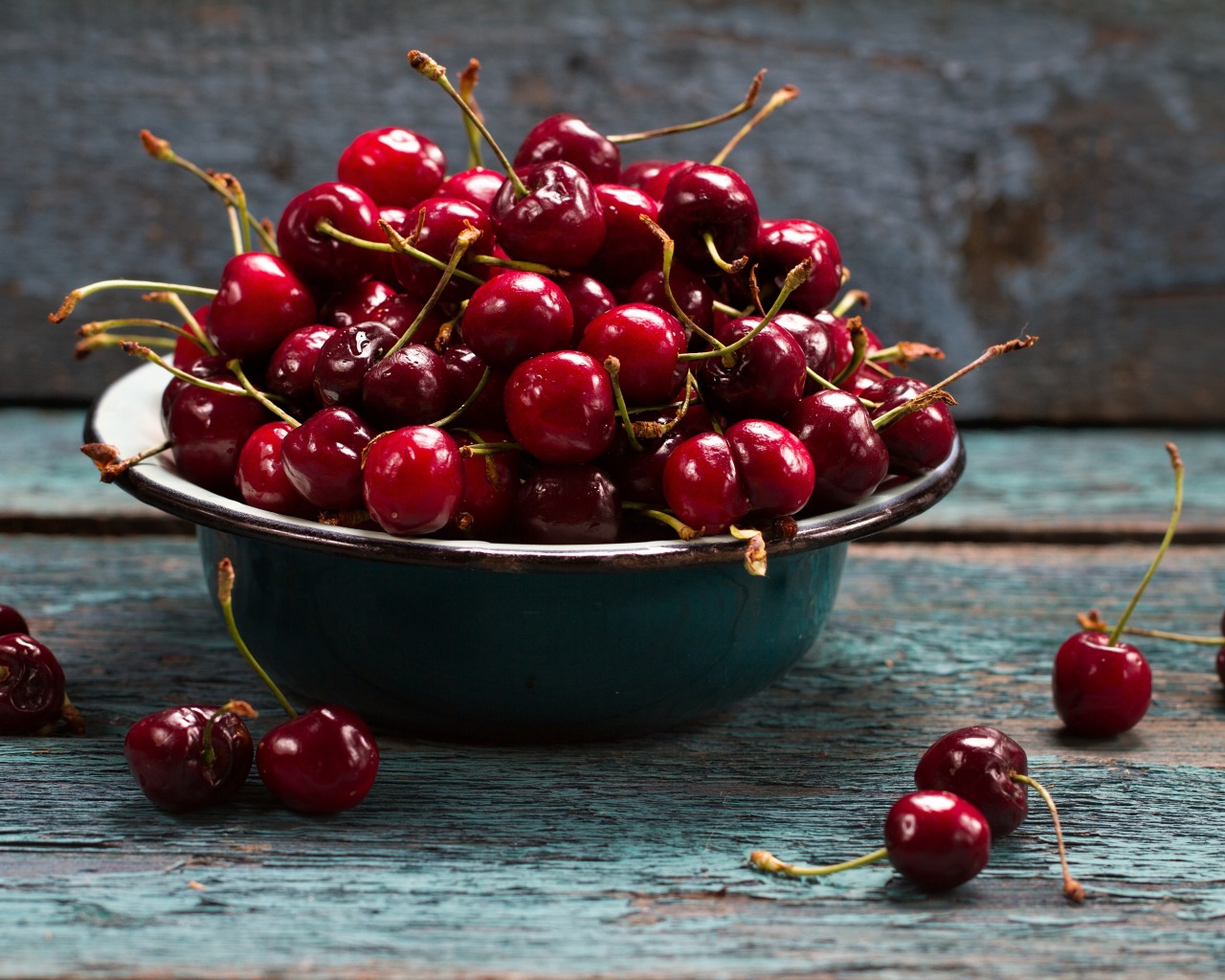Cherry is a perennial stone fruit plant with healthy and tasty berries. Depending on the variety, it is grown as a tree or as a bush. The conditions of the Central Russian region are suitable for its cultivation, zoned seedlings will delight with a good harvest.
Content
Criteria for selecting cherry varieties for central Russia
Conventionally, a region bounded from the north by the Leningrad and Vologda regions (including them), from the south by the Belgorod and Saratov regions (including them) is referred to the central zone of Russia. The Moscow region also belongs to the middle zone, in the west it borders on Belarus, in the east - on the Volga region.
In the middle lane there is a warm summer, usually rainy springs and autumn, severe winters are possible and spring return frosts are likely. When buying cherry seedlings, you should pay attention to the following characteristics of the variety:
- winter hardiness;
- resistance to fungal diseases;
- ripening terms;
- the beginning of fruiting;
- tree height;
- self-fertility;
- taste qualities;
- the ability to propagate the variety by root shoots.
Winter hardiness
Higher requirements for the winter hardiness of cherries are imposed when growing them in the northern regions of the middle zone. In the southern regions, wintering conditions are not so severe. Spring frosts are quite probable until the end of May, return frosts occur until mid-June. They can kill buds, flowers, young leaves and shoots. Autumn frosts in some areas of this region sometimes occur in mid-September.
Cherries are sensitive to temperature fluctuations. Kidneys swollen during a thaw can die if the temperature drops below 0 ° C. If in the area where the seedlings are supposed to be planted, there is a high probability of spring and return frosts, one should pay attention to the winter hardiness of flower buds.
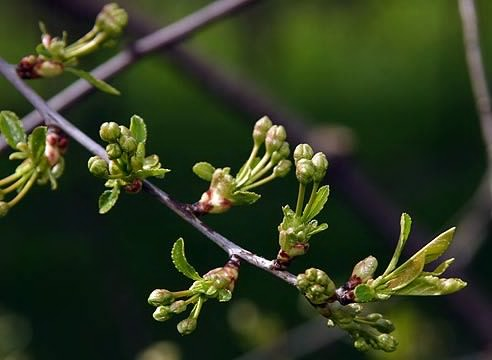
Sometimes cherry blossoms can bloom too early and die from recurrent frost, so it is better to plant varieties whose flower buds are resistant to this phenomenon.
To protect the early ripening cherries from spring frosts, it is recommended to trample the snow in the trunk circle and cover it with light material or hay. These measures will help delay the onset of flowering.
Resistance to fungal diseases
Cherry is susceptible to coccomycosis and moniliosis. The development of these fungal diseases is favored by a wet, cool summer, often observed in some areas of the Central Russian region.
It is advisable to choose varieties that are resistant to coccomycosis and other fungi.
Terms of ripening and beginning of fruiting
The ripening dates of early varieties fall on the end of June - the first half of July, middle ones - in the second half of July, late ones - at the end of July and August. In the northern regions of the middle lane, it is risky to plant early varieties, their flowering may coincide with the period of return frosts... Late varieties may not have time to ripen due to the short summer.
Usually cherries begin to bear fruit in the 5-6th year. There are early-growing varieties, as well as varieties of cherries that can yield a harvest in the 2nd to 4th year.
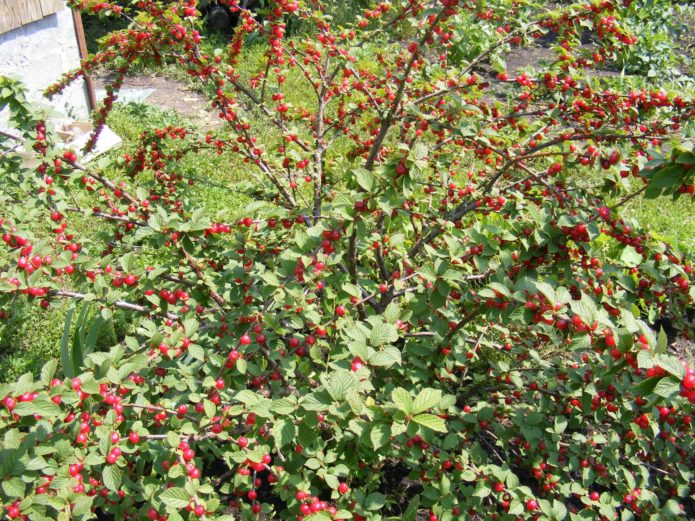
Shrub species and varieties of cherries are faster than tree-like ones, but, of course, with felt cherries and the yield will be less
Bushy varieties, such as felt cherries, are quicker than standard varieties. Early-growing varieties quickly increase productivity, which is an undoubted advantage when grown in risky farming in the middle zone. Another way to speed up the entry of cherries into fruiting is grafting: grafted seedlings yield a crop in the 2-3rd year.
Cherry height
Cherry trees can grow up to 7 m. However, their height is usually 3-5 m, and undersized specimens do not exceed 2.5 m. In the middle lane, you can grow tree-like and bush varieties of cherries of any height, but remember that small trees are easier to protect from frost, and easier to care for.
Pollination method
The pollination method is distinguished by:
- self-fertile cherries - for fruiting they do not need other varieties nearby, they are able to set up to 50% of the fruits when pollinated with their own pollen;
- self-fruitless cherries - for the formation of ovaries, they need simultaneously flowering varieties growing in the same area, they cannot set more than 5% of fruits when pollinated with their own pollen;
- partially self-fertile cherries - capable of setting up to 20% of fruits when pollinated with their own pollen.
To obtain a large yield from self-fertile and partially self-fertile cherries, a pollinator is desirable. In the case of self-fertile cherries, a pollinator is required.
Fruit characteristics
Cherry fruits differ depending on the variety:
- size - small fruits can be about 8 mm, large fruits reach 2 cm in diameter;
- shape - heart-shaped, round or semicircular;
- color:
- moreli (griots) - varieties with dark fruits and dark pulp. Red juice leaves stains difficult to remove;
- amoreli - varieties with bright red fruits. The pulp is light yellow, the juice is light;
- taste - evaluated on a 5-point scale, taking into account the biochemical composition, pulp structure, aroma:
- excellent taste - 4.8–5.0 points;
- good taste - 4.4–4.7 points;
- satisfactory taste - 4.0-4.3 points;
- mediocre taste - less than 4 points.
Excellent dessert varieties are obtained by crossing cherries with cherries, they are called "duki".
Breeding method
Cherries are usually propagated by grafting onto the stock and root shoots (these are young plants grown from adventitious buds located close to the surface of the roots of the mother cherry). Own-rooted cherries are able to recover after the complete freezing of the aboveground part, the grafted tree in this case will lose its food value.
It is advisable to have both grafted and overgrown seedlings in your garden. Grafted cherries begin to bear fruit earlier and give a more bountiful harvest. However, in the northern regions of the region in question, preference should be given to native-rooted varieties.
The most suitable cherry varieties for central Russia
There are many varieties of cherries for growing in central Russia. Each gardener can choose the ones suitable for his needs.
Self-fertile cherries
Self-fertile varieties require little or no additional pollinators. Due to the peculiarities of fertilization, their yield does not depend on weather conditions during flowering. Even in unfavorable weather (strong wind, rains), they give a regular harvest. For example, Lyubskaya cherry is a highly self-fertile variety..
Photo gallery: some varieties of self-fertile cherries for central Russia
- Cherry Igritskaya is a late-ripening partially self-fertile variety
- Cherry in Memory of Yenikeev has an average resistance to fungal diseases
- Cherry Shpanka has good winter hardiness of flower buds
- Cherry varieties Lyubskaya - highly self-fertile
Self-fertile and partially self-fertile varieties bear fruit better if there is a pollinator.
Table: self-fertile and partially self-fertile cherry varieties for central Russia
| Variety name | Berry weight, g | Ripening terms | Winter hardiness tree / flower buds | Resistance to fungal diseases | Fruit taste |
| Annushka | 4,5 | early | high / high | high | a great |
| Anthracite * | 4,5 | average | high / high | average | a great |
| Apukhtinskaya (Lyubskaya) | 4,5 | late | low / low | low | mediocre |
| Brunette | 3,5 | average | high / medium | average | a great |
| Bystrinka * | 3 | average | medium / high | average | good |
| Volochaevka | 4,5 | average | medium / medium | average | good |
| A meeting* | 10 | average | high / high | high | a great |
| Gnome | 4 | late | high / high | low | mediocre |
| Star* | 5 | early | high / high | high | good |
| Cinderella | 4 | average | high / high | high | good |
| Igritskaya * | 4,5 | late | high / high | high | good |
| Abundant | 3 | late | high / high | average | mediocre |
| Baby | 5 | early | high / high | high | good |
| Lighthouse* | 5 | late | Satisfied / Satisfied | low | good |
| Youth | 4,5 | average | high / medium | average | good |
| Nizhnekamsk * | 3 | average | medium / medium | high | good |
| Novella * | 5 | average | good / average | high | satisfactory |
| Novodvorskaya * | 4 | average | high / medium | average | good |
| Nord Star * | 4 | late | high / high | high | good |
| Abundant | 3,5 | late | high / high | average | satisfactory |
| Octave | 4 | average | medium / high | average | good |
| In memory of Yenikeev | 5 | average | medium / medium | average | good |
| Fad* | 5 | average | medium / medium | average | a great |
| Radonezh * | 4 | average | high / high | high | mediocre |
| Rossosh black * | 4,5 | average | high / high | low | good |
| Tamaris | 4,5 | late | high / high | high | good |
| Miracle cherry * | 9,5 | early | high / high | high | good |
| Firtash * | 5 | average | medium / medium | high | good |
| Shakirovskaya | 4,5 | early | good / average | average | good |
| Chocolate girl | 3,5 | early | good / good | low | satisfactory |
| Spunk * (Shpanka Dwarf, Shpanka Bryansk, Shpanka Early, Shpanka Shimskaya) | 4 | average | good / good | high | good |
| Generous | 4 | late | good / good | average | good |
* - partially self-fertile varieties.
Almost all of the above varieties begin to bear fruit in the 3-4th year. The varieties Lyubskaya, Shakirovskaya and Chudo-cherry give a harvest for the 2-3rd year. A good harvest of the Molodezhnaya and Malyshka varieties begin to give after 5 years.
Sweet cherry varieties - sweet cherries
New varieties (dukes), created by crossing cherries with cherries, have sweet large fruits inherited from sweet cherries. The cherry gave them the ability to withstand low temperatures.
Self-fertile and partially self-fertile varieties of cherries that produce sweet fruits (dukes):
- Saratov baby
- Hope,
- Spartan,
- Wonder cherry.
Photo gallery: some varieties of sweet cherries for central Russia
- Cherry Miracle cherry - early-growing
- Cherry pulp Baby dark red, medium, juicy, sweet and sour
- Cherry fruits of the Nadezhda variety have a dark red skin color, and are most often round in shape
Low growing cherries
Low-growing varieties take up little space on the site, it is easy to remove fruits from them.
Low-growing self-fertile varieties (height 2-2.5 m):
- Brunette,
- Bystrinka,
- A meeting,
- Lyubskaya,
- Novella,
- Nord Star,
- Octave,
- Chocolate girl.
The Feya variety with an average size of light red berries (3.5 g) and an average ripening period belongs to low-growing (2–2.5 m) self-fertile varieties. Winter hardiness of the tree itself and flower buds is high, in addition, the Fairy is resistant to fungal diseases. Pollinators for her are the varieties Vladimirskaya, Lyubskaya.
Photo gallery: some undersized cherry varieties for central Russia
- Cherry varieties Shokoladnitsa grow no more than 2.5 m tall
- Cherry varieties Fairy - winter hardy
- Cherry Vstrecha is a mid-season variety with large fruits
Dwarf cherries
Dwarf cherry trees do not exceed 2 m in height, their roots do not reach great depth. They are ideal for small areas with high water tables.
Dwarf self-fertile varieties:
- Anthracite,
- Radonezh,
- Tamaris.
Photo gallery: some varieties of dwarf cherries for central Russia
- Cherry variety Anthracite - universal
- Cherry varieties Tamaris begin to bear fruit in the 2nd-4th year
- Cherry varieties Radonezh are resistant to spring frosts
Bush cherries
Bush forms propagate by cuttings and recover well after freezing.
Self-fertile bush varieties:
- Bystrinka (height up to 150 cm);
- Gnome (height up to 120 cm);
- Abundant (height up to 300 cm);
- Lighthouse (height up to 150 cm);
- Youth (height up to 250 cm);
- Nizhnekamsk (height up to 200 cm);
- Abundant (height up to 150 cm);
- Shakirovskaya (height up to 150 cm);
- Generous (up to 200 cm high).
Table: bush self-fruitless varieties of cherries for central Russia
| Name | Berry weight, g | Ripening terms | Winter hardiness tree / flower buds | Resistance to fungal diseases | Notes |
| Vladimirskaya | 3,5 | average | high / medium | average |
|
| Menzelinskaya | 3,5 | late | high / high | high |
|
| Insecure | 4,5 | early | high / high | average |
|
| Vole | 2,5 | average | high / high | low |
|
Photo gallery: some varieties of self-fertile and self-fertile bush cherries for central Russia
- Cherry variety Molodezhnaya reaches a height of 2.5 m
- Cherry variety Vladimirskaya is characterized by high winter hardiness
- A good harvest can be harvested from Bystrinka cherries
- Cherry variety Menzelinskaya - late ripening
Growing cherries in central Russia
Cherries are unpretentious: if you follow the simple recommendations for growing them, they will regularly delight you with a good harvest.
Planting a seedling
You can plant a seedling in the spring, before the buds open, and in the fall, until mid-October. The best time is mid-April. In the fall, the selection of seedlings is greater. If you purchased a seedling in late autumn, dig it into a trench on the site and cover it, and transplant it to a permanent place in the spring.
In central Russia, soils differ in texture, acidity, and fertility. There are both highly fertile sod lands and poor podzolic soils with high acidity. High acidity and heavy soil adversely affect the development of the plant; it is necessary to add sand and a deoxidizer (ash, lime or dolomite flour) to the soil before planting.
The soil removed from the planting pit is mixed with one bucket of sand and 1 kg of ash.When using lime and dolomite flour, their amount is determined depending on the pH of the soil, the necessary information is given on the package. It is recommended to periodically deacidify the soil after several years.
Ash should be preferred as a deoxidizer. The phosphorus and potassium contained in it are well absorbed by the plant and provide nutrition for the cherry. The groundwater level should be at the level of 1.5–2 m. If the water table is high, plant the seedling on a mound.
The requirements for the planting pit are standard - half a meter deep, 60 cm wide. Bushy and undersized varieties are placed at a distance of 2-3 m, 3-4 m are left between tall trees.
If you want to get a big harvest, do not plant cherries next to plums, apples and pears - they can interfere with pollination.
Watering
Cherries are drought-resistant. In the middle lane, it must be watered during the flowering and ripening period, if necessary. Enough 5-6 buckets per tree. The last watering is carried out after the leaves fall (in October) in order to create comfortable conditions for the plant for wintering.
Top dressing
In the fall, cherries can be fed with phosphorus and potash fertilizers. In spring, it is advisable to add nitrogen to the soil (bird droppings, azophoska). Fertilizers are recommended to be applied in the form of a solution of low concentration.
Pruning
Regularly, in autumn and spring, crown pruning is carried out. Dried branches are removed, long branches are shortened (more than 40 cm). In autumn, pruning is recommended in October, before the onset of frost. In spring, the branches should be cut before the juices start moving (in March-April). Frozen twigs are cut off after the buds begin to bloom.
Video: features of pruning cherries
Disease prevention
Cherries are susceptible to fungal diseases. Even varieties with high resistance to them can suffer in adverse weather conditions. In autumn, the fallen leaves should be removed and burned. Preventive spraying with copper preparations (copper sulfate, 1% Bordeaux liquid, copper oxychloride) will help reduce the risk of disease.
Spraying with copper preparations is carried out before flowering and after harvesting the fruits, following the instructions attached to the preparations. Very good results are obtained by using Horus. They begin to use it at the first signs of damage to the plant by the fungus, continue to spray it during the growing season (weekly) and stop using it two weeks before removing the berries.
Reviews about cherries in central Russia
Cherry Tamaris ... The berry is large, tart to the taste, eat it without pleasure ...
I have always believed that Shpanka is the variety, or rather, a folk hybrid between cherry and sweet cherry. Well, not to say that it is completely sour, but not enough sweetness.
Radonezh ate a little this year, the berry is very tasty.
Cherries in the middle lane suffer more from moniliosis and coccomycosis than freezing. Resistant varieties have not yet been created, there are relatively stable, good reviews about the varieties Radonezh and Igritskaya ...
Do not flatter yourself about cherries (any). Now almost all cherries in our country suffer from a heap of fungal diseases: coccomycosis, moniliosis, clasterosporiosis, anthracnose. There are no varieties resistant to moniliosis at all. By the way, the variety in Memory of Yenikeev suffers from coccomycosis. In wet years, half of the leaves and fruits are affected by it. And although in the State Register it is recommended for 3 regions, in fact, as its breeders say, it is better suited for the southern regions of our zone. Self-fertility of the variety is its advantage, but for better fruit set, you still need to plant a pollinator.
… About cherries I can advise in Memory of Yenikeev, very large berry, tasty. Medium-sized tree, spreading. Also, probably, banal Vladimir and Youth. In such a kit, ensure cross-pollination and yield, respectively, at a minimum cost. The harvest will be fairly stable. This does not mean that all cherries will bear fruit abundantly every year. But 2 out of four (2 pcs. Would have planted in Memory of Yenikeev) will bear fruit for sure.
Purchase only zoned cherry varieties, preferably bush and undersized, plant seedlings of various varieties. With proper care, a cherry orchard will delight you with a stable harvest of tasty and healthy fruits.
